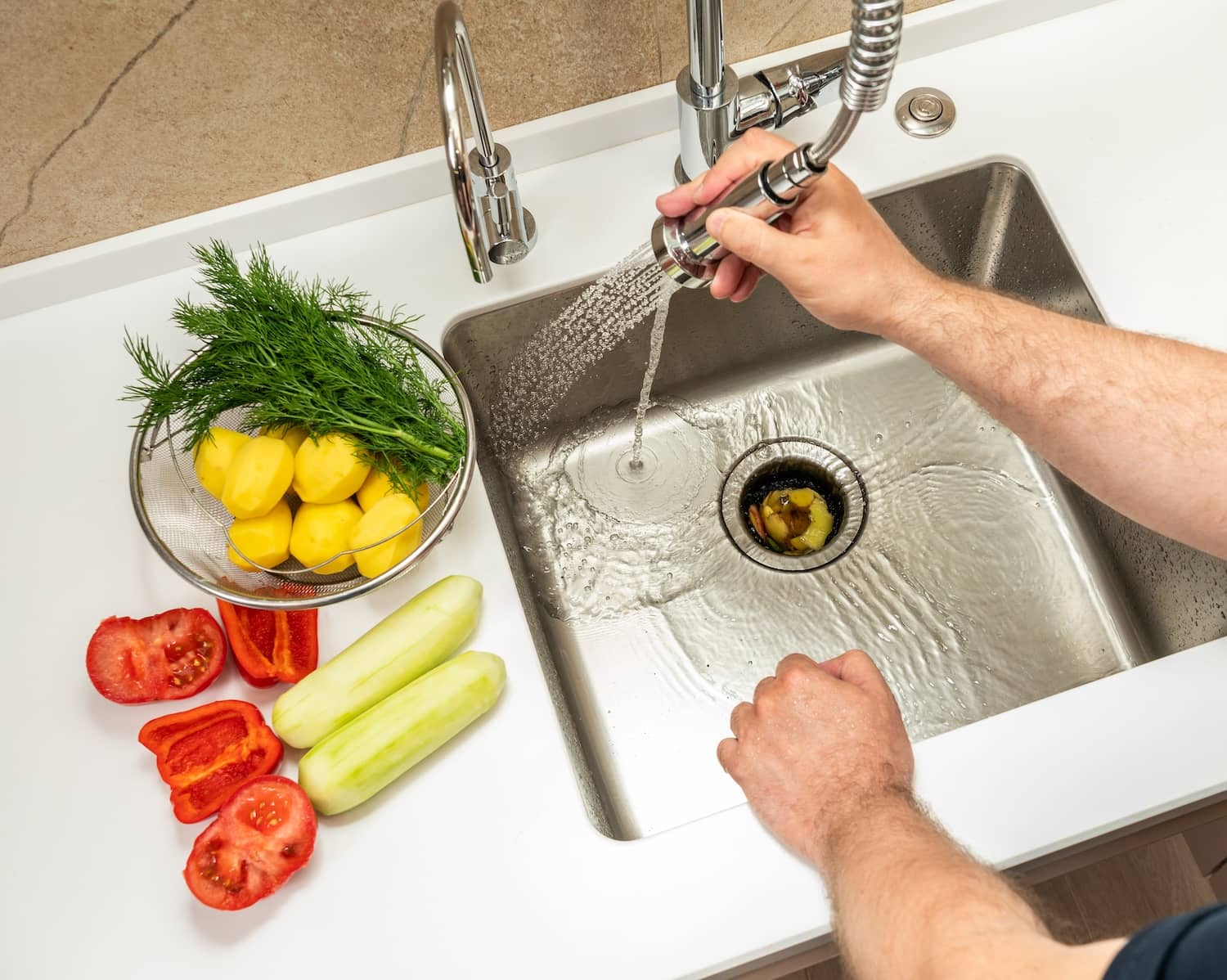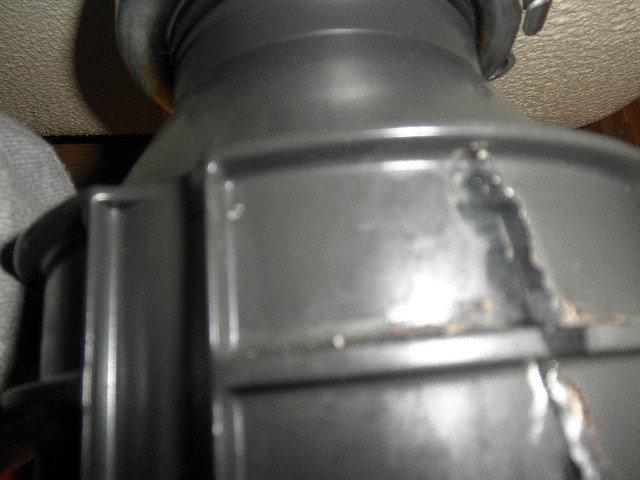Quick Steps to Stop a Leak in Your Garbage Disposal
Quick Steps to Stop a Leak in Your Garbage Disposal
Blog Article
What're your thoughts about How to fix a pretty consistent leak from my garbage disposal?

Garbage disposals are necessary kitchen area devices that assist in disposing of food waste successfully. However, a leaking waste disposal unit can be an irritating and unpleasant issue to take care of. Thankfully, numerous leakages can be taken care of conveniently with a few easy actions. In this short article, we will certainly review exactly how to take care of a dripping waste disposal unit efficiently.
Intro
Waste disposal unit are installed under kitchen area sinks and are developed to shred food waste into smaller sized pieces, permitting it to go through the plumbing system quickly. While these gadgets are typically trustworthy, leaks can take place in time as a result of damage, loose links, or damages to the system.
Typical Reasons For Leakages in Trash Disposals
Worn Seals and Gaskets
Seals and gaskets play an essential function in stopping water from dripping out of the garbage disposal. Over time, these elements can weaken, causing leakages around the disposal system.
Loose Links
The connections between the garbage disposal and the pipes system can come to be loose over time, creating water to leakage out throughout operation.
Fractures or Openings in the Disposal Device
Physical damage to the garbage disposal, such as splits or holes in the housing, can also result in leaks.
Determining the Resource of the Leakage
Before trying to fix a dripping waste disposal unit, it is essential to recognize the resource of the leakage. This can normally be done through visual assessment or by conducting straightforward examinations.
Visual Evaluation
Check the garbage disposal device thoroughly for any type of signs of water leak. Pay close attention to areas around seals, gaskets, and connection points.
Checking for Leakages
One method to evaluate for leaks is by running water through the disposal system and checking for any kind of noticeable indicators of leak.
Tools and Materials Needed for Repairing a Dripping Waste Disposal Unit
Before beginning the fixing process, gather the needed tools and products, including a screwdriver, adjustable wrench, plumbing's putty, substitute seals or gaskets, and epoxy or patching material for repairing cracks or openings.
Step-by-Step Guide to Taking Care Of a Leaking Garbage Disposal
Shut off the Power
Prior to attempting any fixings, make sure that the power to the waste disposal unit unit is switched off to prevent the risk of electrical shock.
Find the Leak
Determine the exact place of the leakage and determine the reason.
Tighten up Links
Utilize a wrench to tighten up any kind of loose links between the disposal unit and the pipes system.
Replace Seals or Gaskets
If the leakage results from used seals or gaskets, remove the old elements and replace them with brand-new ones.
Patching Splits or Holes
For fractures or holes in the disposal system, use epoxy or a suitable patching product to seal the damaged location.
Examining the Waste Disposal Unit After Repair
Once the repair work is total, examine the garbage disposal by running water with it to make sure that the leakage has actually been settled.
Preventive Maintenance Tips to Avoid Future Leakages
To prevent future leakages, it is important to execute routine upkeep on your waste disposal unit. This includes maintaining it tidy, avoiding placing non-food products or hard objects down the disposal, and periodically checking for leakages or various other issues.
Verdict
To conclude, repairing a dripping garbage disposal is a fairly uncomplicated process that can be completed with standard tools and materials. By complying with the actions laid out in this post and exercising preventative upkeep, you can keep your garbage disposal in good working problem and stay clear of costly fixings in the future.
HERE’S HOW TO FIX YOUR GARBAGE DISPOSAL
WHAT TO DO IF SOMETHING IS STUCK IN YOUR GARBAGE DISPOSAL
If the impeller won’t turn, there’s probably something stuck in the disposal. It could be a steak bone or peach pit, although plumbers report pulling all sorts of inappropriate objects out of disposals, such as bottle caps or aluminum foil. Make sure power to the disposal is off, and look inside to see if you can see the source of the jam.
Never stick your fingers in a disposal. Pull out anything you see with tongs or pliers.
If the disposal still won’t work, it may be time to call a plumber or consider buying a new disposal. GEM Plumbing & Heating is here for all of your garbage disposal needs.
WHAT TO DO IF YOUR GARBAGE DISPOSAL DRAIN IS CLOGGED
Take everything out from underneath your sink and put a bucket or other container under your disposal to catch any water that drains out. Disconnect your disposal from the power supply. If it’s plugged into a wall outlet, unplug it. If it’s hardwired into an electrical box, go to the electrical panel and turn off the breaker for the disposal. Pour ¼ cup of baking soda into the drain, followed by ½ cup of white vinegar. Give the solution a few minutes to fizz and do its work. Look into the disposal with a flashlight to see if you can see an object that might be causing the clog. If you see it, remove it using tongs or pliers. MORE TIPS ON DEALING WITH A CLOGGED GARBAGE DISPOSAL
Never use drain cleaner in a garbage disposal. It can damage the plastic parts inside the disposal. You can also be splashed with the caustic liquid while working to clear the clog. Beware! Never stick your fingers into a garbage disposal. Trust us — not a good idea. In many instances, your dishwasher drains through your garbage disposal. This allows the disposal to grind any large food particles that may be drained out of your dishwasher. There are some jurisdictions, however, where the plumbing code prohibits such a connection. WHAT TO DO WHEN YOUR DISHWASHER DRAINS THROUGH THE DISPOSAL
Run some water in the sink so your plunger has at least a ½-inch of water to create a seal and plunge vigorously up and down several times. You may need to repeat this several times. Run hot water down the drain to clear any residue that remains.

I'm certainly very curious about Why Is and I really hope you enjoyed reading the entire post. Are you aware of another person who is enthusiastic about the topic? Why not promote it. Thanks a lot for taking the time to read it.
Book A Free Estimate Report this page